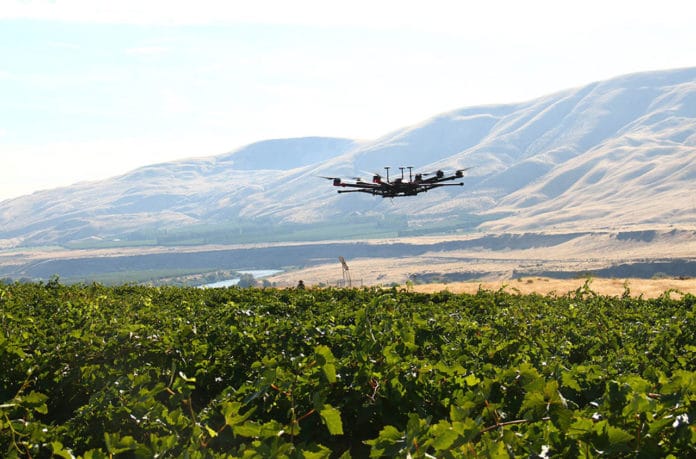Crop damage caused by pest birds is a big problem around the world. Now, researchers are investigating the potential of using unmanned aerial vehicles (UAVs) as a tool for bird deterrence in agricultural fields to address this challenge.
A Washington State University research team has developed just such a system designed to have automated drones available to patrol 24 hours a day to deter pest birds that cost growers millions of dollars a year in stolen or ruined fruit.
Over a few years, the team developed a camera system and algorithm that would find birds and count them as they flew in and out of fields. The cameras were installed around small plots of land with simulated birds, accompanied by customized multicopter drones.
The camera output was continuously analyzed by a machine vision algorithm, which had been trained to recognize the wing-flapping movement of birds. Simulated bird movements generated using waving human hands were used for evaluating the target intercept mission. Results show that the algorithms developed for automated operation completed about 92% of the assigned tasks successfully during the shorter mission and 90% of the task during the longer mission.
“Birds are really clever,” said Manoj Karkee, the study‘s corresponding author. “They often find ways around deterrents. We don’t want a system that only lasts for a few months or years before they stop being scared off.”
For now, the birds are scared off just by the motion and whirring noises made by drones. But Karkee said that sounds, like distress calls or predatory bird noises, could be added. Builders could even design special drones for the job.
The automation research is the third in a series of three studies concerning drones and bird pests. The first showed that manually operated drones, doing random flights, successfully drive off or keep birds away from vineyards. They found that the use of drones reduced bird counts four-fold. Another project showed the impact driving off the birds can have on crop yield. Karkee’s team followed up on the fields where they manually drove birds off. Those fields had around a 50% reduction in damaged fruits.
Karkee plans to meet with growers, technology companies, and other stakeholders to start the next steps in working toward a commercially available automated drone system.
“We could make drones look like predators or have reflective propellers that are really shiny,” he said. “All of these working together would likely keep birds away from those vineyards and fields. We need to research that over multiple years to make sure.”
